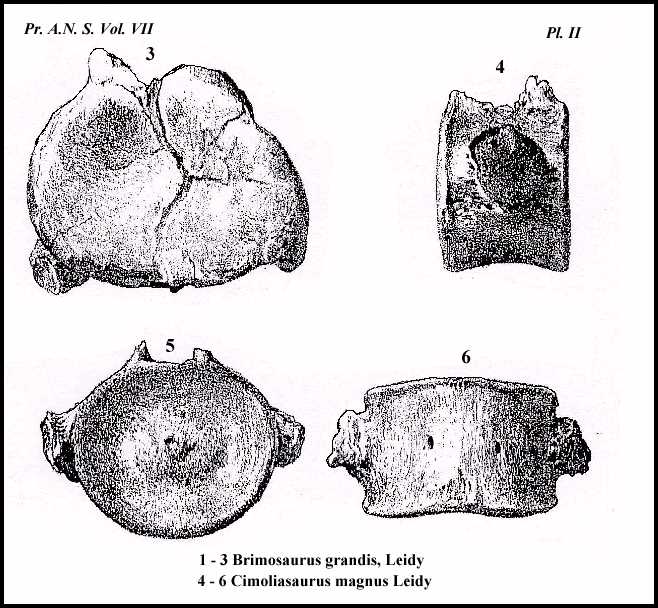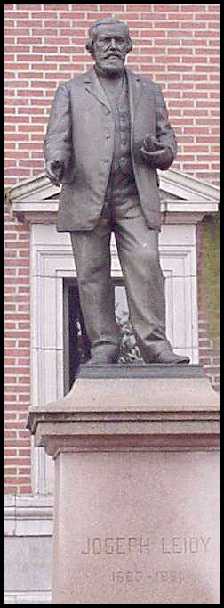72
[May, ________
May 23d
Vice-President Bridges in the Chair.
Letters were read --
From Dr. Wm. Wirtenwerber, dated Prague, 30th. Oct.,
1853, transmitting several of his works, acknowledged this evening.
From Dr. W. D. Hartmann, dated West Chester,
Pennsylvania, May 16, 1854, acknowledging the receipt of his notice of election as a
Correspondent.
Dr. LeConte presented a paper by Mr. C. Girard, and
intended for publication, entitled "A list of North American Bufonides, with
diagnoses of new species." Referred to Dr. Hallowell, Dr. J. Leidy, and Mr. Hanson.
Dr. Leidy called the attention of the members to
specimens of four vertebrę of a huge extinct saurian, from near Greenville, Clark Co.,
Arkansas. They had been kindly loaned by Mr. W. F. Roberts, an agent of the Arkansas
Mining Company, who had discovered them with numerous others. Dr. L. stated, that in his
late visit to St. Louis, Mr. Albert Koch, the industrious collector of fossil remains, had
exhibited to him a collection of bones from the same State, and apparently of the same
animal, which he was on thc eve of sending to Berlin.
The specimens on the table are remarkable for the
robust transverse processes, which project laterally from the lower part of the body, and
terminate in a large facet for the articulation of a rib. The bodies are
cylindroid, and
are terminated by slightly concave or nearly flat articular surfaces. The sides of the
body are moderately concave, and have an acute margin at the articular surfaces. On each
side of a median prominence of the under side of the body a large vascular foramen exists.
These vertebrę resemble those of the Cimoliasaurus
magnus, from the green sand of New Jersey, described previously in the Proceedings of
the Academy,* but in that the large transverse process is cylindrical, while it is
compressed cylindroid in the Arkansas saurian, and probably this latter belongs to a
distinct genus, for which the name Brimosaurus grandis is proposed. The bones are
embedded in a hard limestone with mollusca, and they probably belong to the cretaceous or
to the Eocene period. One of the most perfect of the vertebrę presents the following
measurements:
Length of the body.
3 3/4 inches.
Depth of articular surfaces.
5
"
Breadth of "
"
.
6
"
Length of the spinal arch.
3 "
References of Plate II.
Fig. 1-3 Brimosaurus grandis.
Fig. 4-6 Cimoliasaurus magnus.
*Vol. v. p.325.


